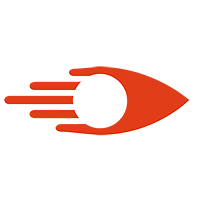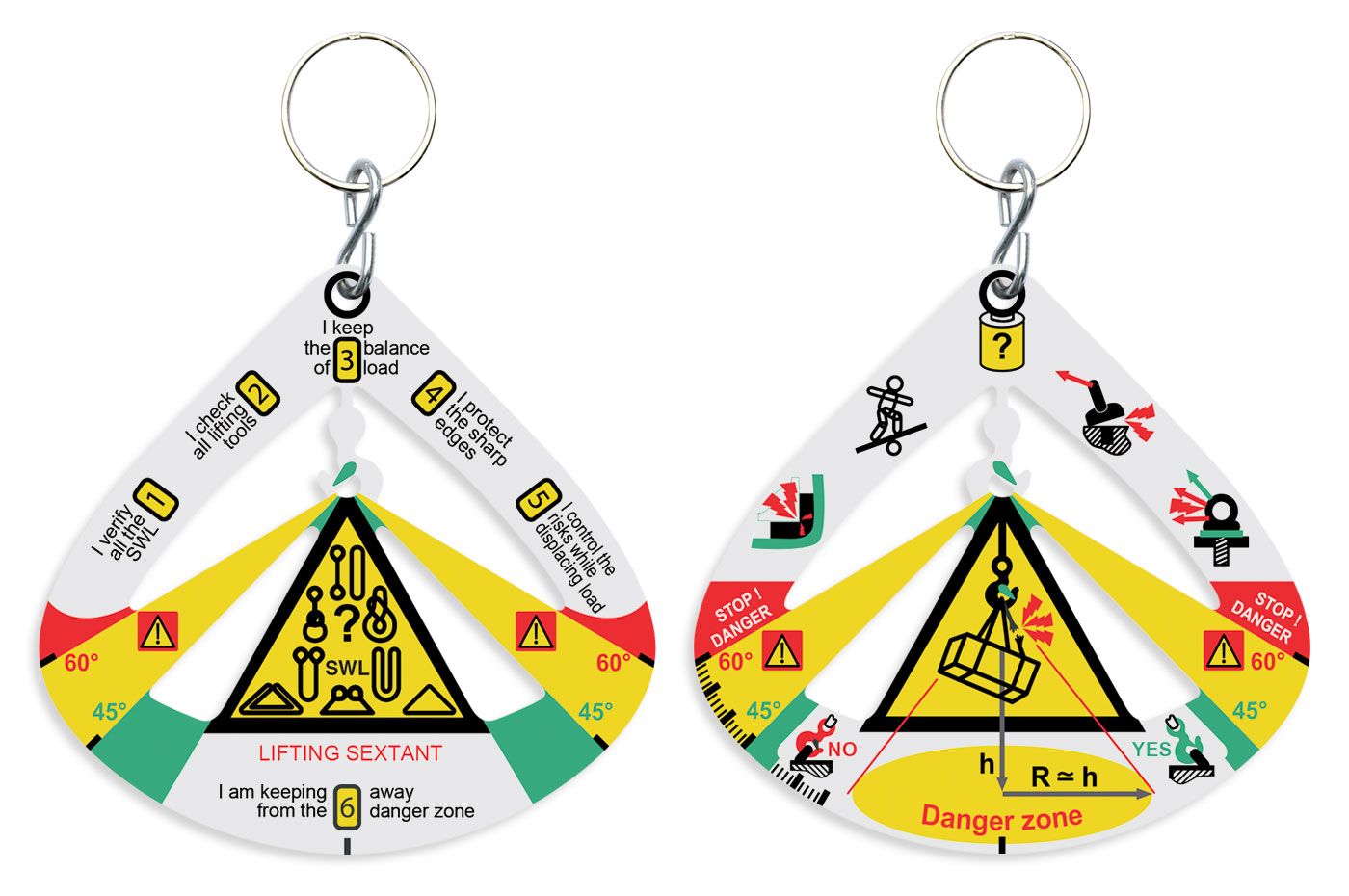21
juin
How to secure your lifting operations with the lifting sextant
Le Dans Sécurité levage
The lifting sextant is available in an English version.
The lifting sextant is a tool developed to optimise the safety of operators when lifting loads using slings (flat or round textile slings, steel slings).
To facilitate the use of the lifting sextant, and the associated SWL (Safe Working Load) calculation rule, here is a small memo sheet and instructions for use for operators carrying out lifting operations on building sites.
Discover this lifting sextant memo sheet in detail below.
The lifting sextant is a tool developed to optimise the safety of operators when lifting loads using slings (flat or round textile slings, steel slings).
To facilitate the use of the lifting sextant, and the associated SWL (Safe Working Load) calculation rule, here is a small memo sheet and instructions for use for operators carrying out lifting operations on building sites.
Discover this lifting sextant memo sheet in detail below.
Reminder of lifting equipment and accessories
To ensure the success of your lifting operation, you can use the following equipment:
Lifting equipment and accessories:
• Shackles
• Rings
• Slings
• Hook
• Latch
• Tooling
• Spreaders
• Hoists
• Beam
• Truck
• Crane
• Anchor point
SWL? Safe Working Load
Always check if the SWL is appropriate for the slinging method and the load to lift, using the SWL calculation rule.
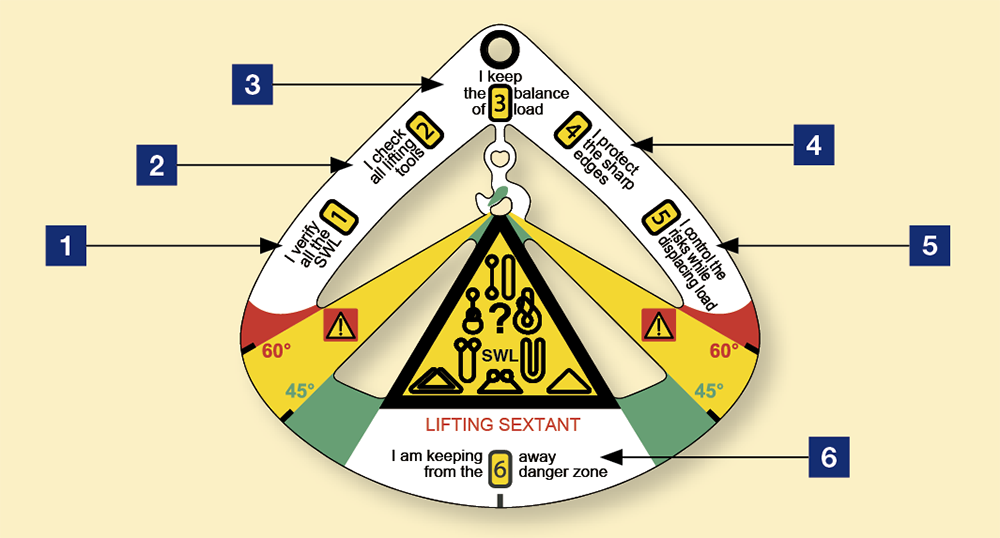
Front side of the lifting sextant
1. Check the SWL values of all the lifting equipment involved in the move
2. Check the overall condition of lifting equipment
3. Keep the load balanced and securely held together
Use spreaders. Use an appropriate slinging method. Make sure the load is lifted along its centre of gravity.
4. Protect sharp edges
Use protection that is suited to the type of sling.
5. Assess the risks
• Appropriate movement speed
• Crowding in the load movement area
• Jobs being performed one above another
• Interferences with equipment in place (scaffolding)
• Interference with infrastructure
• Crowding in the operator movement area
6. Be mindful of the danger zone
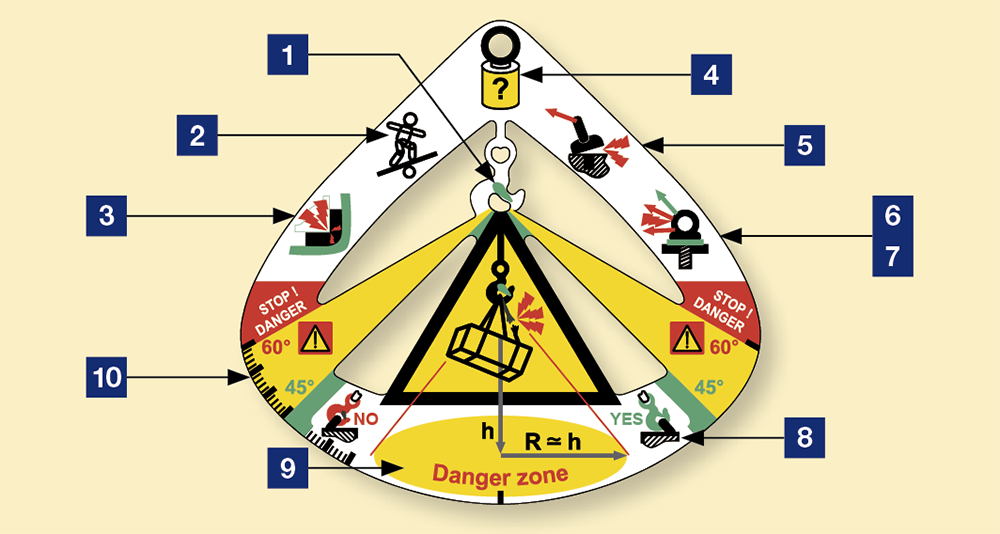
Back side of lifting sextant
1. Check that the safety latch is present and in good condition.
2. Balance the load and making it integral and secured together.
3. Protect sharp edges.
4. Be aware of or assess the weight of the lifted load every time.
5. Mind the direction of the ring and the line along which force is exerted.
6. Tighten the flat part of the ring in contact with the part.
7. Tighten lifting rings and mind the lifting angles.
8. Follow the outer hook hanging requirements.
9. Danger zone
• Assess the perimeter of the danger zone
• Mark out the danger zone
• Make sure nobody is in the danger zone
• Identify the load movement path
• Identify the operator movement path
• The operator must also remain outside the danger zone
10. Lifting angles
• Strictly follow the permitted lifting angles
• Always check them before first applying tension
• Above 45 degrees, always check the SWL values of slings
The lifting sextant memo
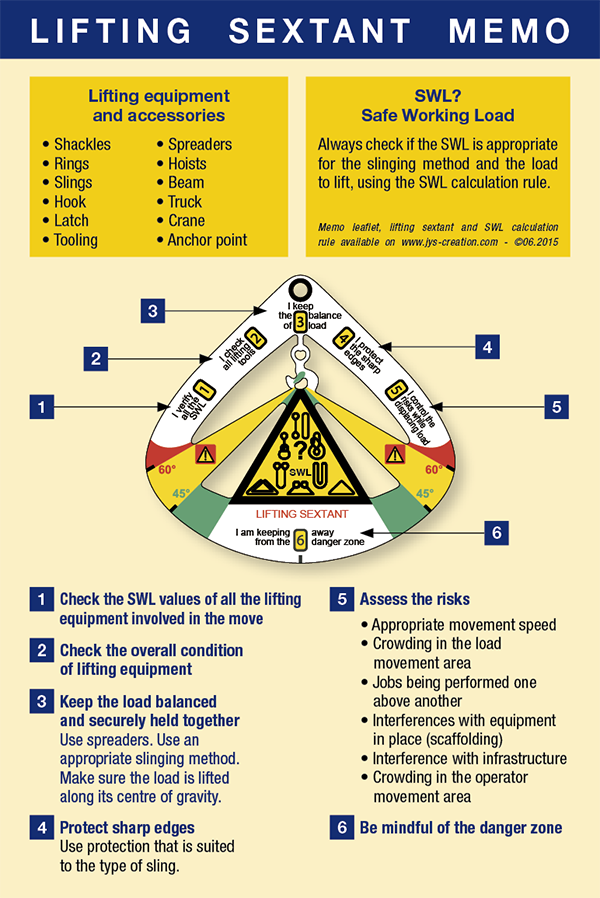
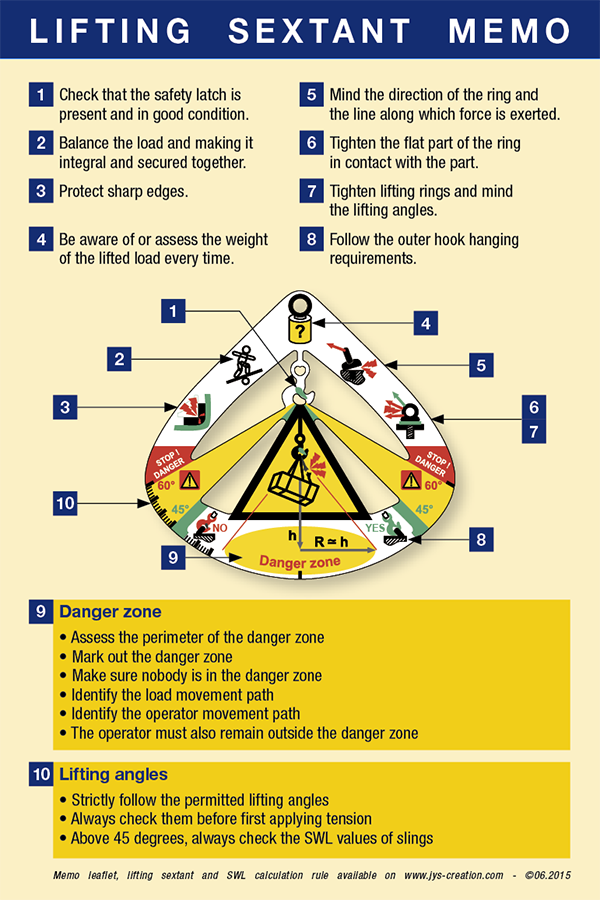
Product information and resources in French:
To ensure the success of your lifting operation, you can use the following equipment:
Lifting equipment and accessories:
• Shackles
• Rings
• Slings
• Hook
• Latch
• Tooling
• Spreaders
• Hoists
• Beam
• Truck
• Crane
• Anchor point
SWL? Safe Working Load
Always check if the SWL is appropriate for the slinging method and the load to lift, using the SWL calculation rule.

Front side of the lifting sextant
1. Check the SWL values of all the lifting equipment involved in the move
2. Check the overall condition of lifting equipment
3. Keep the load balanced and securely held together
Use spreaders. Use an appropriate slinging method. Make sure the load is lifted along its centre of gravity.
4. Protect sharp edges
Use protection that is suited to the type of sling.
5. Assess the risks
• Appropriate movement speed
• Crowding in the load movement area
• Jobs being performed one above another
• Interferences with equipment in place (scaffolding)
• Interference with infrastructure
• Crowding in the operator movement area
6. Be mindful of the danger zone

Back side of lifting sextant
1. Check that the safety latch is present and in good condition.
2. Balance the load and making it integral and secured together.
3. Protect sharp edges.
4. Be aware of or assess the weight of the lifted load every time.
5. Mind the direction of the ring and the line along which force is exerted.
6. Tighten the flat part of the ring in contact with the part.
7. Tighten lifting rings and mind the lifting angles.
8. Follow the outer hook hanging requirements.
9. Danger zone
• Assess the perimeter of the danger zone
• Mark out the danger zone
• Make sure nobody is in the danger zone
• Identify the load movement path
• Identify the operator movement path
• The operator must also remain outside the danger zone
10. Lifting angles
• Strictly follow the permitted lifting angles
• Always check them before first applying tension
• Above 45 degrees, always check the SWL values of slings
The lifting sextant memo


Product information and resources in French:
TOOLS AVAILABLE FOR SALE
Get a quote


Plus d’infos sur les sextants et réglettes de calcul CMU :
Commentaires
Ajouter un commentaire
Identifiez vous pour poster un commentaire.
